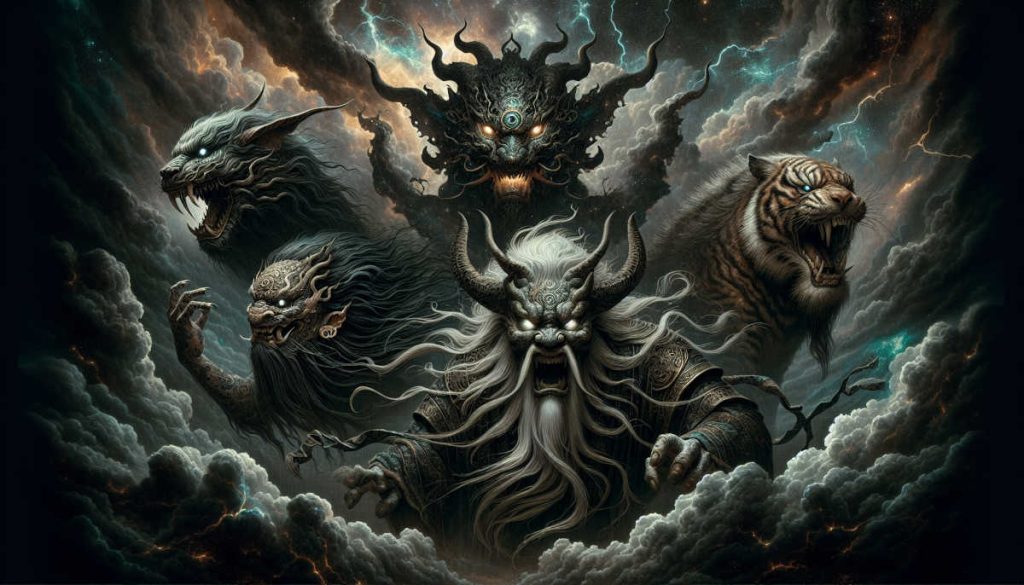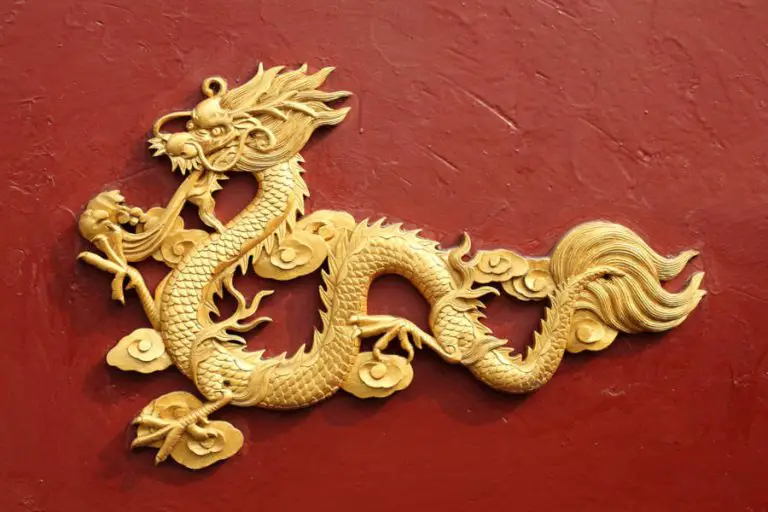In Chinese mythology and astronomy, the Four Evil Creatures, or Four Perils/Four Fiends (四凶; Sì Xiōng) are a group of four creatures that have been exiled by the gods and are the antagonistic counterparts of the Four Celestial Animals: Azure Dragon, Vermillion Bird, Black Tortoise, and the White Tiger.
The four evil creatures are:
- Hundun (混沌): represents Chaos. A creature without a face, but sometimes depicted as resembling a ferocious bear or dog. Hundun is also believed as the primordial and central chaos in Chinese mythology
- Taowu (梼杌) – represents Ignorance. Often depicted as resembling a boar or a tiger, spreading ignorance amongst the people.
- Taotie (餮) – represents Gluttony. Depicted as not having any body, just the head of a ferocious beast that seeks to devour everything.
- Qiongqi (穷奇): represents Deviousness. Looks like a winged tiger that instigates war, eats people, and commits various other malicious deeds.
According to the Zuo zhuan (左傳), translated to “The Zuo Tradition” or “The Commentary of Zuo”, an Ancient Chinese narrative history, these four creatures were reincarnated from evil tribe leaders in the time of the legendary emperor Yudi Shun (23rd century BCE) after their deaths in ancient times. They are San Miao(三苗), Huan Dou(驩兜), Gun(鲧), and Gong Gong(共工), who were defeated and then exiled by Emperor Shun before their deaths.
Various other ancient Chinese literature also discussed the Four Evil Creatures, including the Shan Hai Jing (Classic of the Mountains and Seas), ancient literature describing mountains, regions within the seas, and mythic animals.
Below, we will discuss each of these Four Evil Creatures.
1. Hundun
Hundun, 混沌 , can be translated roughly into “chaotic torrent”, and is believed to be an extension of the mythical primordial chaos, the state of the universe before heaven and earth separated.
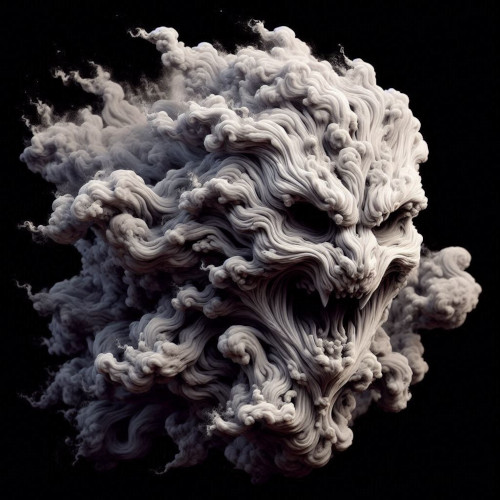
There are several different versions of Hundun in Chinese mythology, but the most common one is the version in Shen Yi Jing (神异经), which can be translated as “The Classic Annals of Gods and Strange Animals”, written in the times Han Dynasty (206 BC-AD220).
In this version, the Hundun is a monster shaped like a huge, ferocious dog that cannot differentiate wrong from right. It has a bear’s palms with no claws, has eyes but cannot see, can walk but cannot move, and has non-functional ears so cannot hear anything. Due to this description, the Hundun is also often depicted as a creature without a face/head.
The Hundun has a belly but doesn’t have any functional organs like the heart, lungs, or kidney. It has straight, non-twisting intestines so anything it eats will pass the intestines directly.
Another version depicts Hundun as a faceless, formless entity, embodying the primordial chaos before the creation of the universe. Hundun’s body might appear as a swirling mass or cloud of mist, with an undefined shape that suggests movement and instability. It could have a vaguely humanoid form without distinct facial features—no eyes, mouth, or nose.
There are other versions that describe the Hundun as a red-colored winged creature (a bird) that is shaped like a bag with six feet, four wings, yet no face. According to legends, Hundun lives in Tianshan Mountain and loves to sing and dance.
A version of the legend of Hundun was recorded in Zhuang Zi (庄子) (Aff.link), a book by Taoist philosopher Zhuang Zhou. In this version, Hundun originated from an emperor in Central China that has no eyes, nostrils, mouth, and ears. He treated the emperors of the South Sea and the North Sea with great hospitality at his palace, and intending to repay Hundun’s hospitality, the emperors offered to drill seven holes (two eyes, two nostrils, two ears, a mouth) for Hundun.
They drill one hole a day, but when all these seven holes were done, Hundun died and reincarnated as an evil creature.
Since Hundun cannot differentiate right from wrong, it is described that the creature will instigate conflicts when encountering noble people, but will follow the instructions of evil people instead.
2. Taotie
Taotie (餮) can be translated roughly as “greedy glutton”, and is a Chinese mythological symbol of gluttony or greed.
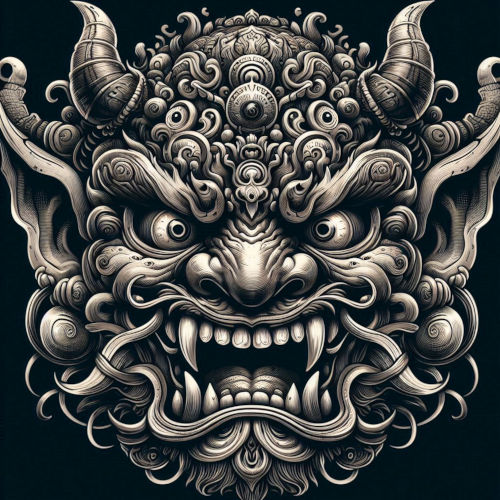
In Shan Hai Jing (山经), Taotie was described as a creature with a sheep’s body, human hands, a human face, and a tiger’s teeth. Its bizarre eyes are placed under its armpits so they are hidden. Taotie is referred to as having a human baby voice.
In another version, Taotie is shown as a monstrous face without a lower body. Its defining features include a large, gaping mouth, sharp teeth, and bulging eyes. The face might also have ornate, intricate details such as horns, ears, and sometimes whisker-like features. The overall look of Taotie is fearsome and menacing, emphasizing its insatiable hunger and greed.
Taotie is so voracious that it eats everything, including humans and even its own body. This is why Taotie depictions are often found in various ancient cooking pots. The term “A feast for Taotie” or Tao Tie Shengyan (餮盛宴) is often used to mention a great party with delicious food in the Chinese culture.
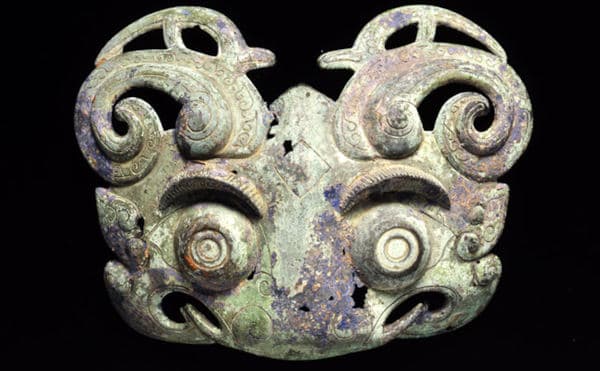
3. Taowu
Taowu (檮杌) can be translated as “stupid stump”, and is a symbol of ignorance or stupidity.
According to the Shan Hai Jing, the Taowu is a creature with a human face, a tiger’s feet, and a pig’s teeth. It has a tail more than 315 meters long and hair that is more than 2 meters long. It is believed that the Taowu lives in regions in the west of China. In Chinese culture, “Taowu” is often used to call a man who is stubborn.
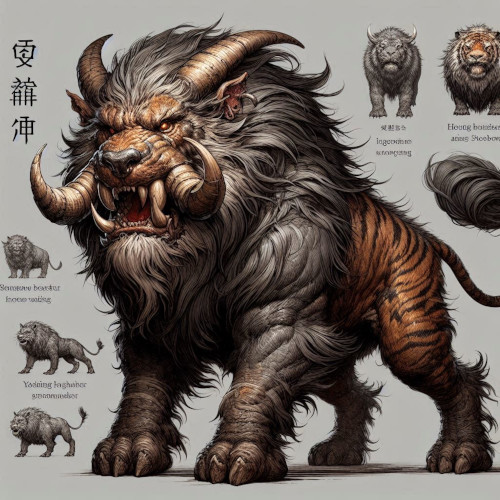
In another version, Taowu is depicted as having the body of a wild boar or a tiger, emphasizing its brute strength and ferocity. It might have thick, coarse fur, sharp tusks or fangs, and a fearsome expression. Some depictions include elements such as horns or a mane, adding to its wild and untamed appearance. The overall look of Taowu is intimidating, showcasing its stubborn and destructive nature.
As recorded in Zuo Zhuan, the Taowu is a belligerent son of Zhuan Xu, one of the great ancient emperors of China, this child is arrogant nature and cannot be taught anything. After his death, it reincarnated into one of the Four Evil Creatures.
Taowu is known for being difficult to deal with, often engaging in destructive behavior due to its stubborn and ignorant nature.
4. Qiongqi
Last but not least, the Qiongqi, 窮奇, can be translated as “poor and strange” and is believed to live in the northern region of China.
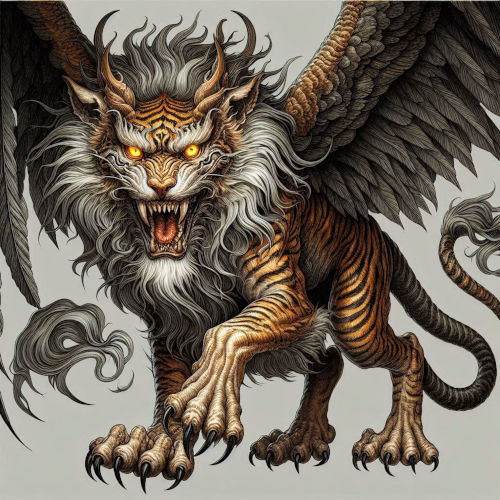
There are also various variations of Qiongqi: in Classics of Mountains and Seas (4th century BCE), the Qiongqi was depicted as a winged tiger who eats people from the head. In Shan Hai Jing, however, Qiongqi was depicted as a tiger-like flying beast that knows human languages and eats people. When people are arguing with each other, Qiongqi would eat the noble person. Otherwise, it will hunt food for the evil person.
When the Qiongqi hears that someone is faithful and noble it will bite the nose of this person. However, it will give animals that it has killed to someone who is unreasonable and vicious. Compared to the other Four Perils, Qiongqi was often described to have more personality and wisdom.
In some versions, Qiongqi was also depicted as an ox with a long fox tail with barking sounds like dogs.
Check out our “Free Culture Library“. We have compiled some great free resources, about Chinese culture, for your research.
Stay in Touch
 Join our newsletter by using the forms on this website or click here!
Join our newsletter by using the forms on this website or click here! Follow us on Google News
Follow us on Google News Follow us on Facebook
Follow us on Facebook
Featured Image from archive.shine.cn

